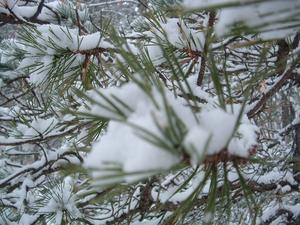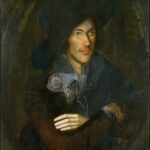A Poet’s Arsenal: Basic Poetic Meter – You can ask a hundred people ‘What is a poem?’ and you will get a hundred very different answers. Fundamentally, you can call it an artistic expression that brings out the beauty in language and conveys some kind of ideal or emotion. That’s a very broad definition and you may have a completely different view on what a poem is.
So what really makes a poem? And how do you write one? There are certain poetic ‘devices’, or creative uses of language, that can help to make just a regular piece of writing more poetic. These devices can affect the sounds of the words themselves, like alliteration (the repetition of a similar sounds at the beginning of multiple words). They can also affect meaning, like metaphor (referring to something as if it is something else that somehow describes an aspect of the item being described) or simile (comparing two items using the words ‘like’ or ‘as’). But the most common poetic devices are rhyme, repetition, and meter.
Rhyme and repetition are very widely understood, even to those of you who’ve not yet delved into the realm of poetry. But meter? Meter is something that may need a bit of explaining.
All poets, young and old, big and small, should have at least a basic understanding of meter. Even if you find that writing a poem to meter isn’t exactly your writing style, you may be called upon to read a poem that was written in meter. It may be a poetic device that you want to call on frequently, or… Well, you might just never think about it again after you read this article.
But poetic meter can be broken down into three types:
- Syllabic
- Accentual
- Accentual-Syllabic
Syllabic Meter
Writing a poem in syllabic meter can be as simple or as complicated as the poet wishes. This type of meter requires a set number of syllables per line, and every line in the poem can have the same amount, or you can alternate lines with different counts. For example, you could write a poem in which every line had 8 syllables. Or you could write one in which the first line had 10, the second line 6, and the counts would alternate as the poem continued.
Attention to flow is key with syllabically metered poems, as although each line may follow the established structure of syllables, there may be some harshly accented words, or the language may not read naturally. It is always a good idea to read your poem out loud (even to an empty room) so that you can hear for yourself how your lines will flow to the readers of your work.
Accentual
Accents in speech are very natural in the English language. Just look at the word ‘English’. The first syllable has a stronger sound to it than the second. These accents can play a big role in how smoothly your poem flows. There is no specific accent pattern to accentually metered poetry. The poet may notice that a line of their poem doesn’t flow very smoothly. Writing it out with the accented syllables noted can help them to reword the line, or add or subtract certain syllables, so that the accents allow for a more even sound.
Poems that are only following an accentual meter should not need to follow any set pattern of syllables or counts, and should be free-flowing. This type of meter can be used with other poetic devices such as rhyme or metaphor, or you may choose not to.
Accentual-Syllabic
The more structured meter is accentual-syllabic. With this type of meter, the poet is trying to arrange the accented syllables of the words they choose into a pattern of stressed and unstressed. Just as we noticed the accented syllable in the word ‘English’ earlier, you will notice that arranging your words so that those accented syllables fall into very specific patterns will require some thought, and oftentimes creativity. This meter is very rhythmic.
There are four very popular patterns of accented syllables that make up accentual-syllabic rhyme. An ‘iamb’ is one un-accented syllable followed by one accented. A ‘trochee’ is one accented syllable followed by one that isn’t. The ‘anapest’ is made up of three syllables and is two un-accented followed by one accented. And a ‘dactyl’, also made up of three syllables, is one accented followed by two un-accented. These basic patterns make up the majority of accentual-syllabically written poems. One repetition of any of these patterns is called a foot.
But a line of only two or three syllables? While it is possible to have only one foot, containing only two or three syllables, in a line, most poems are going to have multiple feet in each line. The number of feet in each line can be classified as follows:
- Two feet – dimeter
- Three feet – trimeter
- Four feet – tetrameter
- Five feet – pentameter
- Etc.
The meter of your accentual-syllabically metered poem can be written out very simply by referring to the type of pattern, and the number of feet included in each line. For example, Shakespeare was famous for writing in Iambic Pentameter. Every line of those poems had ten syllables (five feet), and they followed a pattern of un-accented and accented. Below is an example of Iambic Pentameter from one of Shakespeare’s sonnets:
Shall I compare thee to a Summer’s day?
An example of Anapestic Tetrameter is found in Isaac Watt’s ‘The Sluggard’:
‘Tis the voice of the sluggard, I heard him complain,
Variations
As with any poetic device, there are variations to meter. A syllable can be intentionally left off in a syllabically metered poem when it benefits the poem as a whole. When writing a poem in accentual-syllabic meter, variations can include removing the first syllable of the first foot of a line, or intentionally changing the last dactyl foot of a line to a trochee. The variations that you allow in your poem will make your poem, and your voice as a poet, unique; but variations also bring a risk that your rhythm might be thrown off too much for the reader to follow along smoothly, and it may impact the overall effect the poem has. Use variations with caution, and always weigh the risk versus the reward.
Meter can be as simple as counting syllables or it can be as complex as arranging naturally accented syllables into patterns. I hope that your understanding of the various types defined here has broadened your view of metrical poetry, and as with any poetic devices, you can learn so much about them from reading the masters. Shakespeare, Frost, Byron, Carroll… So much is to be learned.
But now, you have yet another poetic device to add to your Poet’s Arsenal – Basic Poetic Meter.




